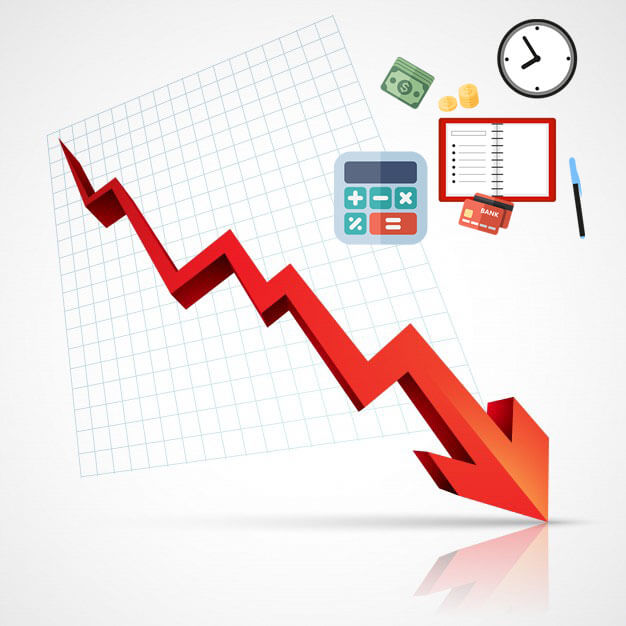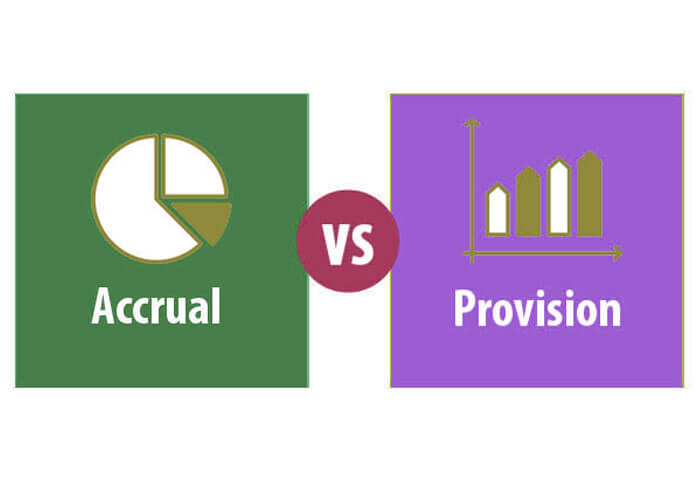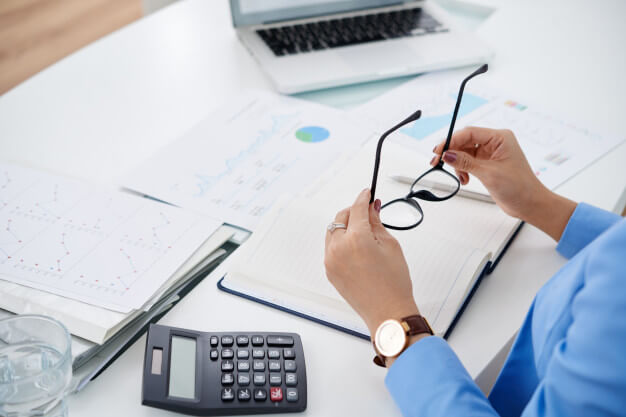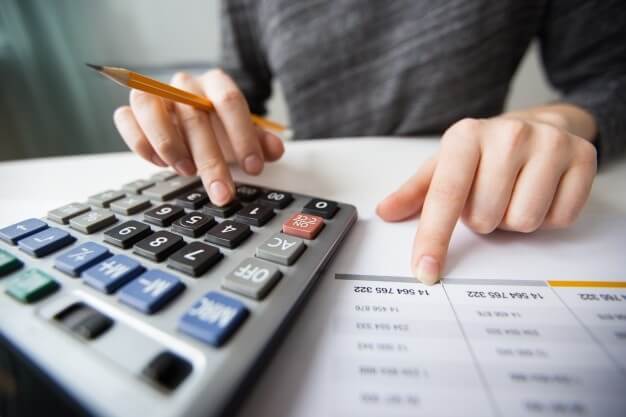[vc_row][vc_column][vc_column_text]
Why there is a need for a depreciation charge?
A good accounting system records all income and expenses and then provides the net profit/loss result at the end of the accounting period. Some expenses are easy to record like an electricity bill or rental expense. It is convenient to charge them to the relevant expense account in that accounting period.
However, some significant expenses like the purchase of buildings or machinery cannot be charged merely to P&L. These expenses (or call them fixed assets) would be useful for the company for several years. Therefore, it is not appropriate to charge the full cost of that building in any 1 accounting year. So there was a requirement to devise a method to apportion the cost of fixed assets across the years where these assets shall be used. This method has been termed as `depreciation`.

Depreciation by definition:
“Depreciation is a systematic way to charge the cost of fixed assets in profit & loss statement over the useful life of the asset.”
Simplest example:
Let’s say that a manufacturing machine is purchased at the cost of $60,000 and this machine has a useful life of 3 years. Now, this $60,000 cannot be booked fully as an expense in profit and loss account. Instead, this amount of $60,000 may be divided into 3 equal portions of $20,000. This $20,000 shall be booked as an expense in all 3 years. This expense shall be termed as depreciation expense.
Key Features of depreciation:
Following features will help you understand and grasp the concept:
- Depreciation is an unavoidable instance, and it happens gradually with the passage of time for every tangible non-current asset
- Wear & tear of the asset with the passage of time is NOT depreciation.
- The total value of depreciation over the life of the asset should be matching with the total cost of the asset. Let’s say an asset has a cost of $100,000 and has a useful life of 5 years, the total depreciation over the life of the asset should be same as $100,000 (i.e., $20,000 per year in case of a straight line depreciation)
- Repair & maintenance expenses incurred on the asset are NOT depreciation.
- Depreciation is a term which should be used strictly for fixed (or non-current) tangible assets.For intangible assets, the alternative word for depreciation is `amortization` Amortization has the same features as depreciation, except for the fact that the word amortization is used for intangible assets.
Impairment and depreciation are the two different accounting concepts. However, sometimes the words are used as synonyms, which is not correct. It is imperative to understand the difference between the two and use the right words for the right situation. To understand the impairment and its key features, read our article on impairment of assets.

Accounting treatment:
Depreciation cost is booked as an expense on the debit side, and the credit goes to a reserve of depreciation account. It is important to realize that there is no credit entry in the asset account for the depreciation charge. This is because depreciation is something invisible, which happens with the passage of time and there is no physical reduction in asset’s quantity or volume.
Therefore, the expense is debited in `depreciation expense` account and credit entry is booked in a reserve account specifically created to accumulate the depreciation expense. This account is usually referred to as `accumulated depreciation account` or `provision for depreciation account`.
Let’s pass entry for an asset which cost $60,000 and has a depreciation charge of $20,000 for 3 years.
Below are the accounting entries to be passed:

The accumulated depreciation account offsets the asset account in the balance sheet. In the above example, the balance sheet value in the first year shall appear as $ 40,000 (instead of $60,000 as available in the asset account). The reason is that asset account of $60,000 shall be netted-off against $20,000 of accumulated depreciation account, resulting in a net figure of $40,000 on the face of the statement of financial position (balance sheet).
The more appropriate word for the depreciation reserve account is `accumulated depreciation a/c.` However, some people also use the term `provision for depreciation a/c`. It is worth mentioning that `provision for depreciation a/c` is not a `provision` as defined under accounting standards. Provisions are separately discussed under IAS 37, “Provisions, Contingent Assets, and Contingent Liabilities.”
Standard rates of depreciation of different types of assets:
For example, if a fixed asset (say a motor vehicle) is purchased at a price of $1,000 and it has a useful life of 5 years, then the annual depreciation will be $200 (using straight-line depreciation method).
So what should be the rate of depreciation of a particular asset? Should it be 10% or 20% or 50% in a year? It all depends upon the useful life of the asset. An asset should be depreciated over its useful life in a manner which depicts the usability of the asset. Let’s say that a non-current asset has a useful life of 5 years, the applicable rate of depreciation will be 20%. Below table provides standard rates for depreciation for the different type of assets. However, it is up to the company’s management to decide the useful life of the asset.
| Type of assets |
Estimated useful life |
Depreciation rate (per annum) |
| Land |
Infinite |
N/A |
| Building |
25 years |
4% |
| Machines |
10 years |
10% |
| Furniture & fixtures |
5 years |
20% |
| Motor vehicles |
4 years |
25% |
| Computers and mobiles |
3 years |
33% |
The useful life of an asset can be assessed by one or more of the following techniques:
- Product description and warranty period as provided by the supplier
- Experience of the useful life of similar assets
- Expert advice related to that specific machinery (e.g., An engineer can advise how long a particular machine be used)
- Other companies’ financial statements having similar fixed assets

Calculation of depreciation: There are two most popular methods for calculating depreciation of fixed assets.
Straight line method of depreciation:
In this method, the same amount of depreciation is charged in each year of the useful life of the asset. Let’s say that a machine has cost $ 100,000 and shall be used for the production of 1,000 units of a product over its useful life of 5 years. The machine shall be disposed-off after 5 years.
As the production of units remains consistent over 5 years and there is no decrease or increase in the usability of the machine with the passage of time. Therefore, it is suitable to charge the same amount of depreciation expense, i.e., $20,000 every year in all 5 years.
Reducing balance method of depreciation:
Let’s take an example of an asset that is used for 5 years but is most productive during the initial years andits usability would decrease in subsequent years. In this case, the depreciation charge should be higher in the initial years and should decrease gradually in subsequent years. This example fits for car rental business. New cars can be rented out at higher premiums while old cars would not attract many customers. Therefore, the most suitable methods in this scenarios would be a reducing balance depreciation method.

However, it is worth analyzing that although depreciation charge decreased gradually over the years, the depreciation charge was highest in the final year of the asset’s life. This is because full net book value of last year has been charged as depreciation expense considering Nil residual value.
Let’s take the example of the same asset assuming that it has a residual value of $10,000 at the end of its useful life. In this case, the full cost of the asset ($100,000) shall not be depreciation over its useful life. Instead cost minus residual value shall be depreciated over it’s useful life i.e., $90,000 ($100,000 minus $10,000). In this case, depreciation rates and amounts shall remain in first four years. In 5th year, the depreciation charge shall be $21,641 ($31,641 minus $10,000). The asset shall remain at a closing value of $10,000 until it is eventually disposed-off at its residual value.
Tax treatment of depreciation expense
In most of the tax jurisdictions, depreciation will be treated as inadmissible expenses because it is a non-cash expense. Further, it is based on several assumptions and may be subject to revision from time to time (i.e., in case of revaluation of assets). Therefore, most of the tax regimes provide their own `tax depreciation schedule` which replace accounting amounts of depreciation.
Investors / Business Analysis point of view
If you are an investor reading financial statements of a company where you have invested in, you don’t need to worry much about the high depreciation expense. This is not an `expense` in the sense that it is consuming resources of the entity. Rather, it is an asset which is contributing towards the entity’s business performance. It is a non-cash expense (not in the first year of the asset’s life, though). Most importantly, there is no control which management can exercise to reduce this expense (once an asset has been purchased). So, do not blame your CEO/management that they are unable to control depreciation expense and it is eating up the profits. It is an expense which will be charged over time.
The only way management can control depreciation expense is that it decides not to invest in the company’s fixed assets anymore. This way may or may not be beneficial for the entity. It will lead to the debate about whether owning a building is better or renting a building is better? Although renting a building will save depreciation expense but owning a building will save rental expense.
Conclusion
Depreciation is a fundamental accounting concept which is often misunderstood as wear & tear of the assets. It is imperative to comprehend the concept and understand it’s logic. Further, it is a judgmental item and may affect the profitability of a company in the short term. The overall impact, however, remains Nil.`
[/vc_column_text][/vc_column][/vc_row]












